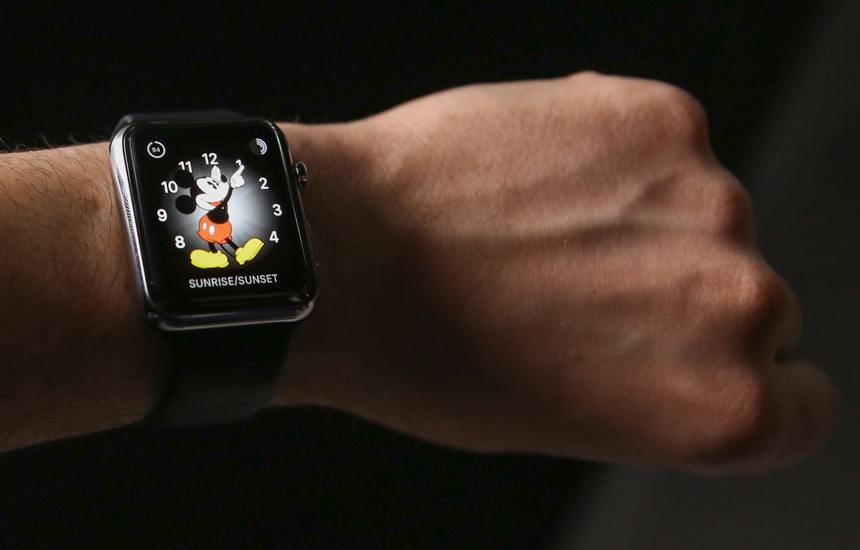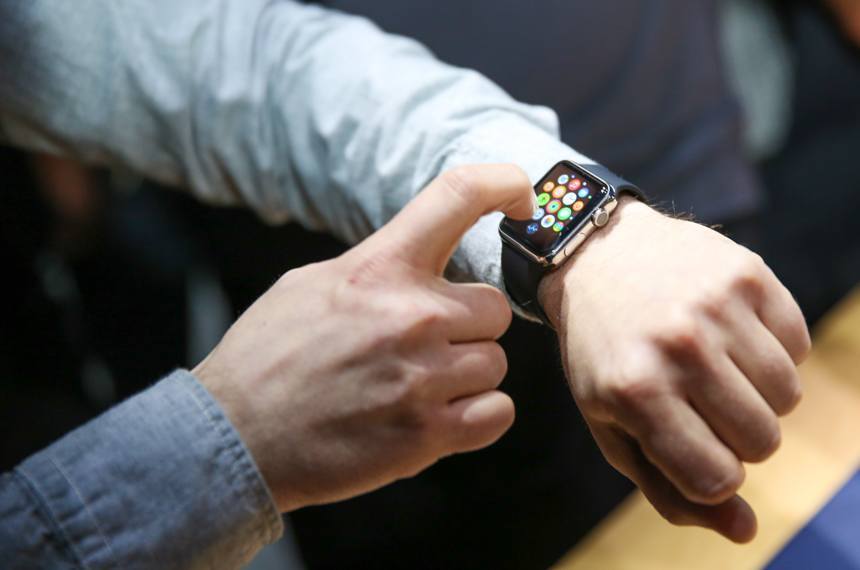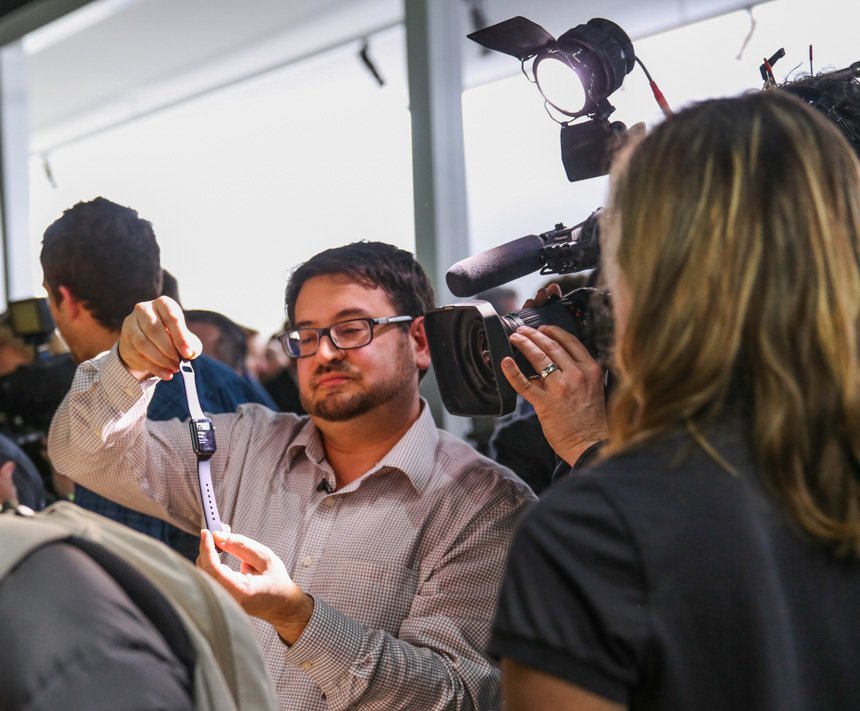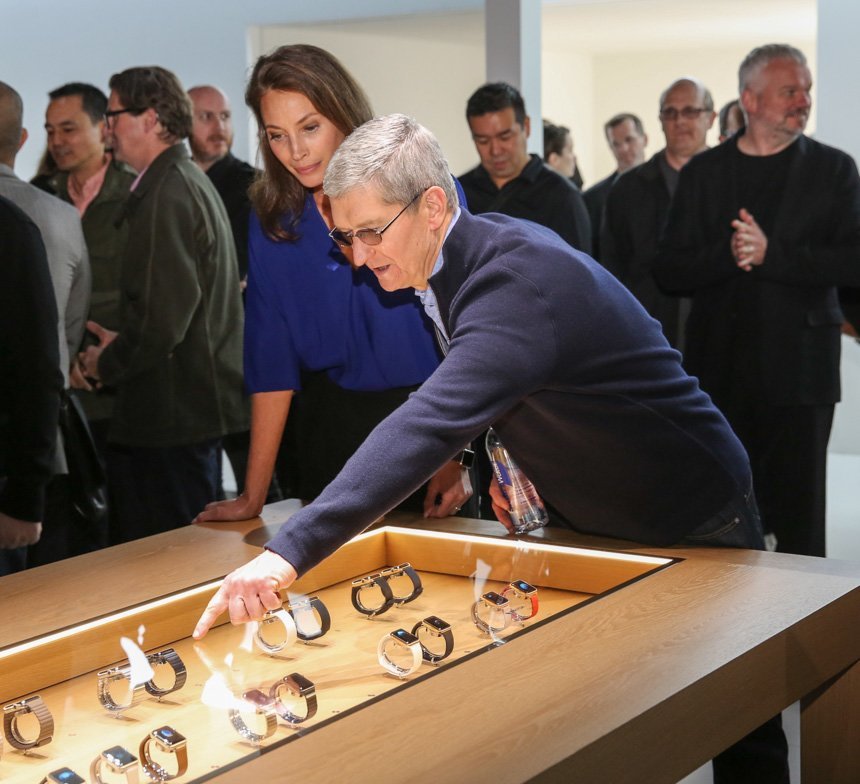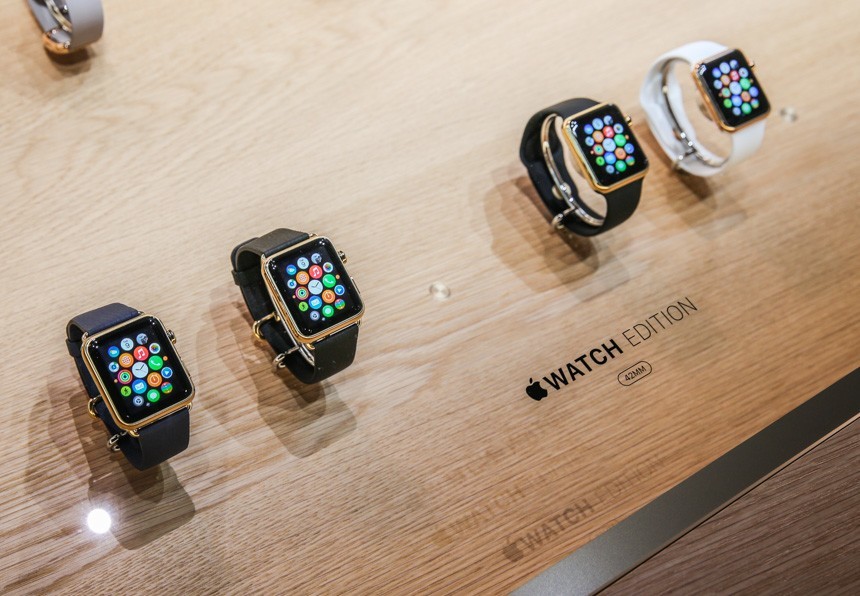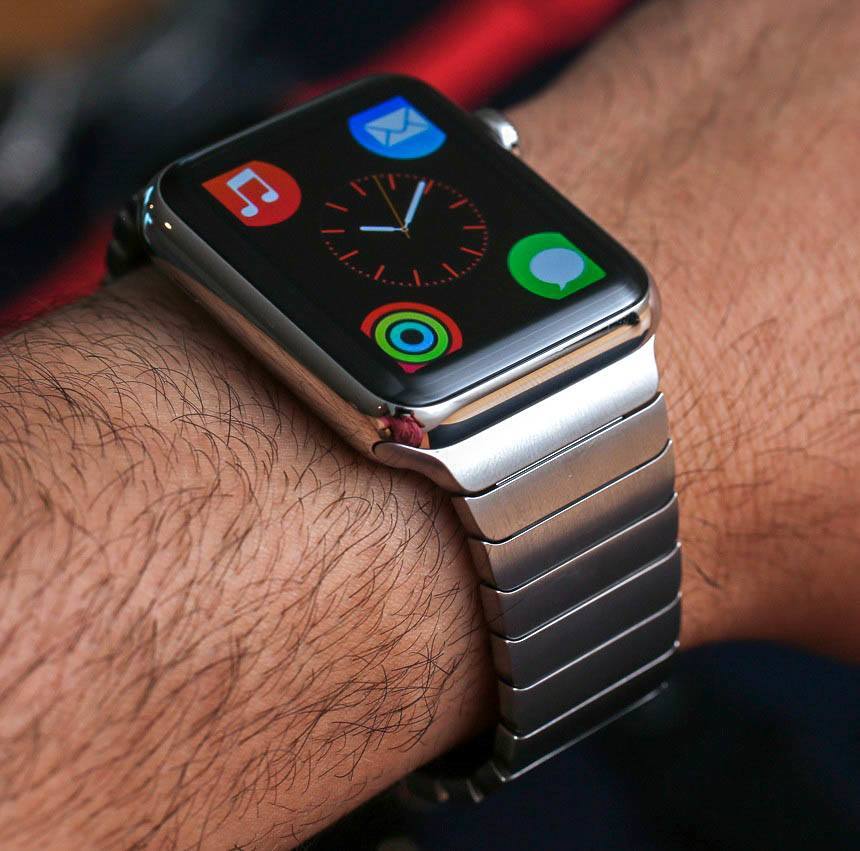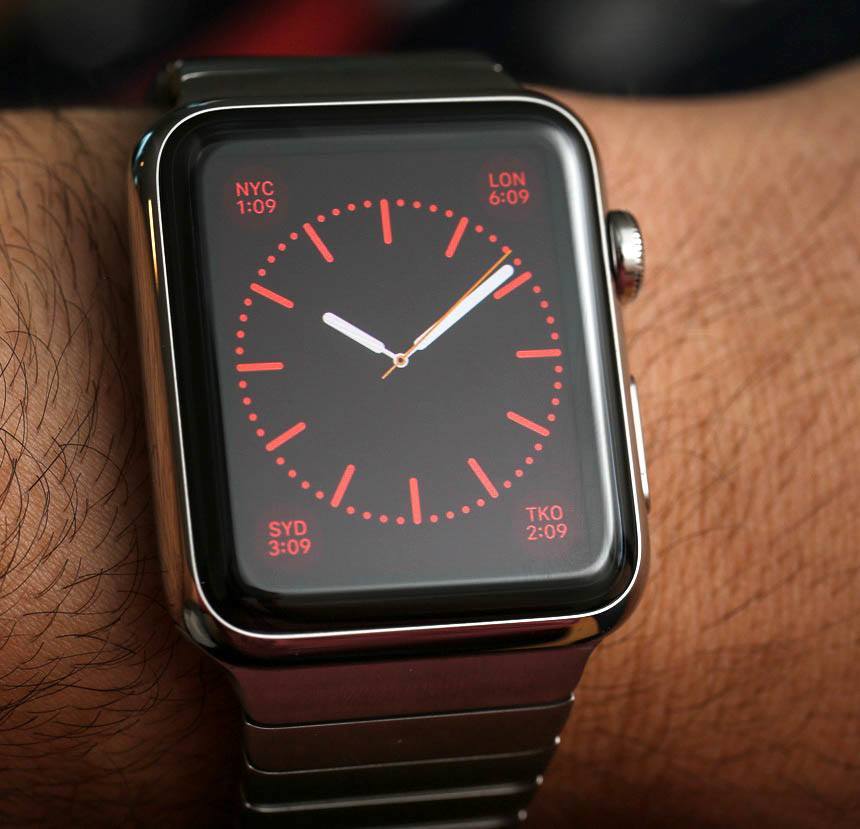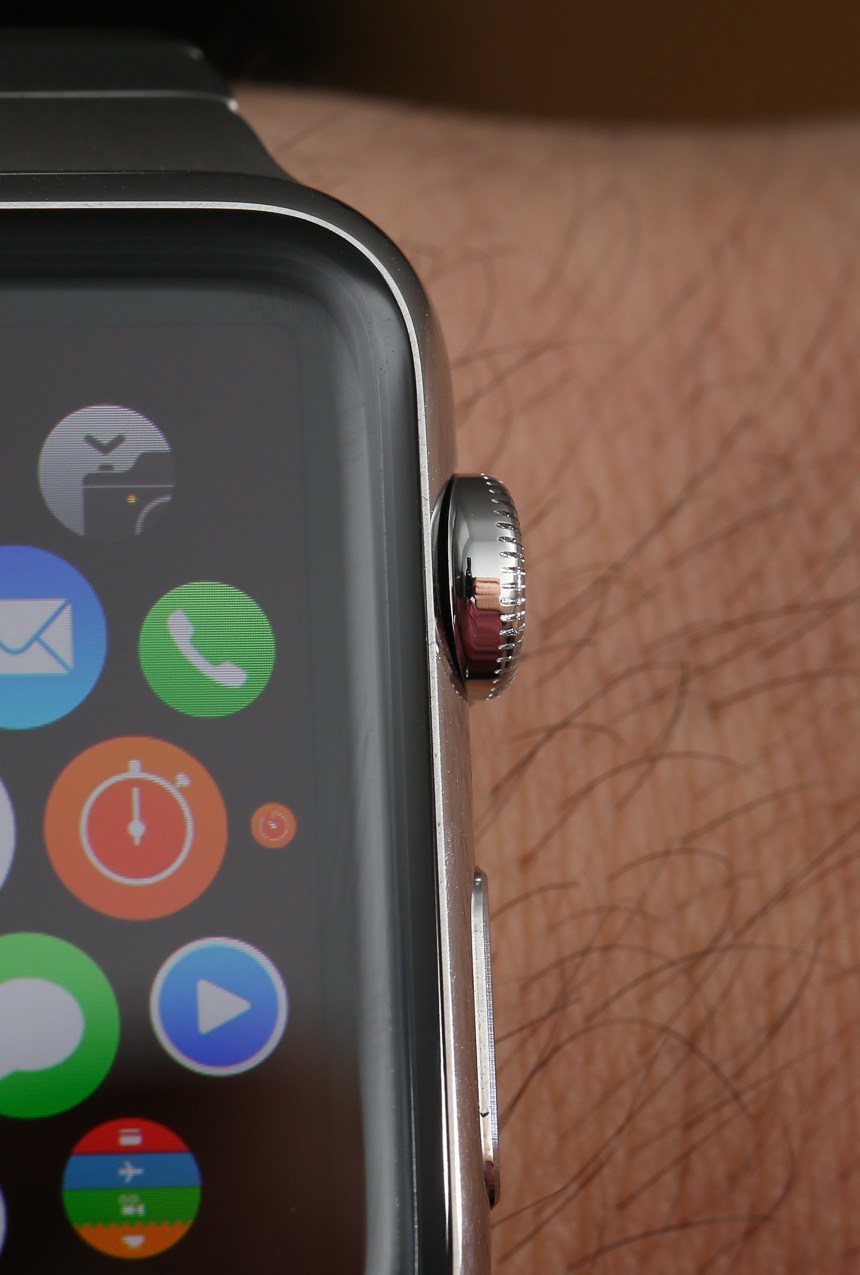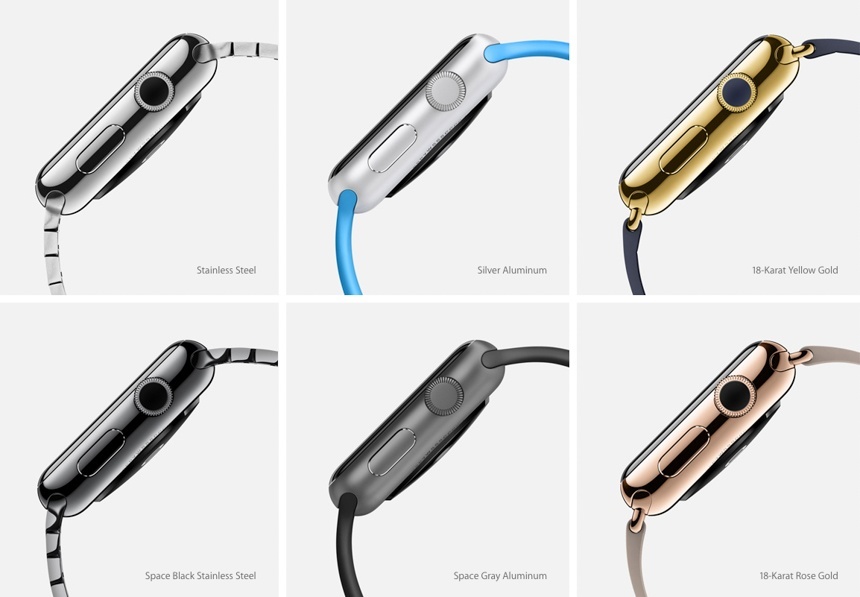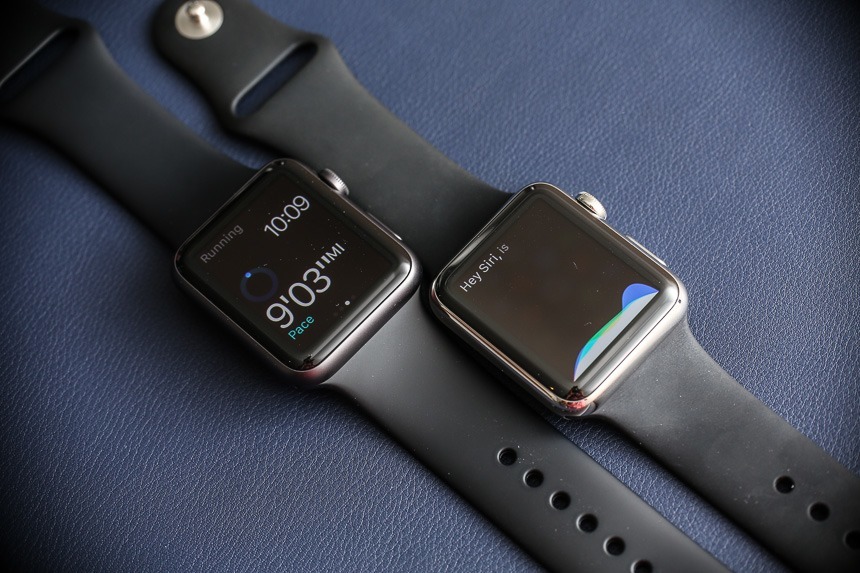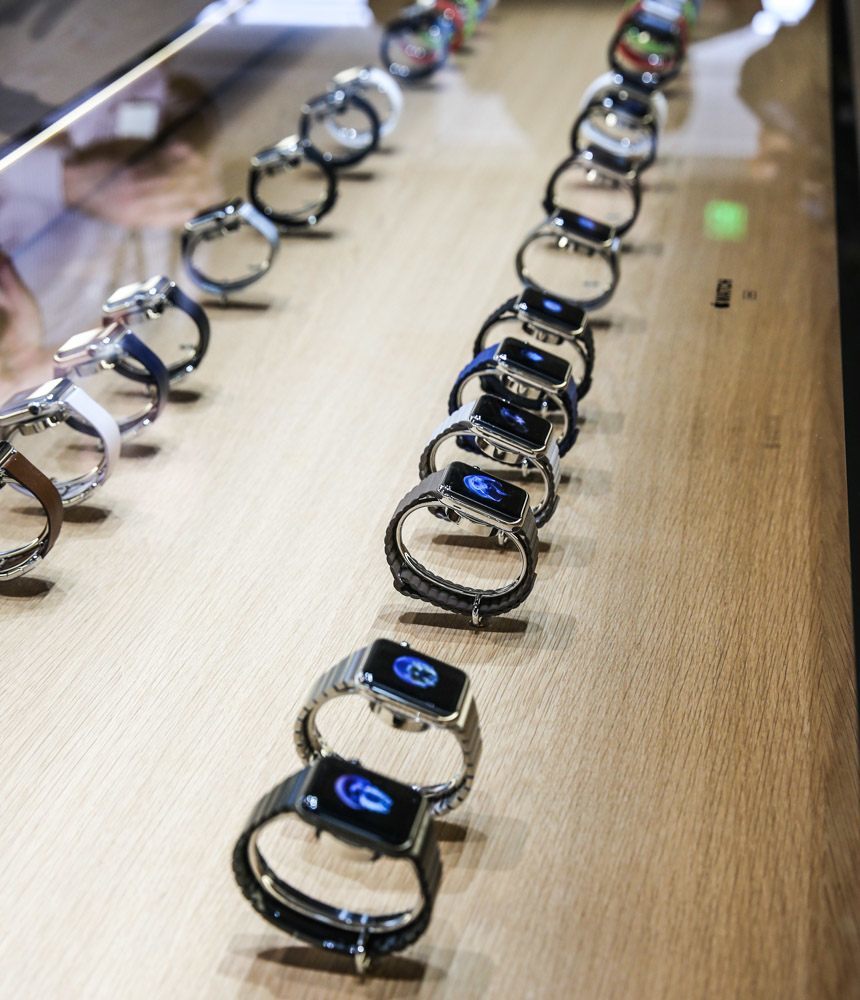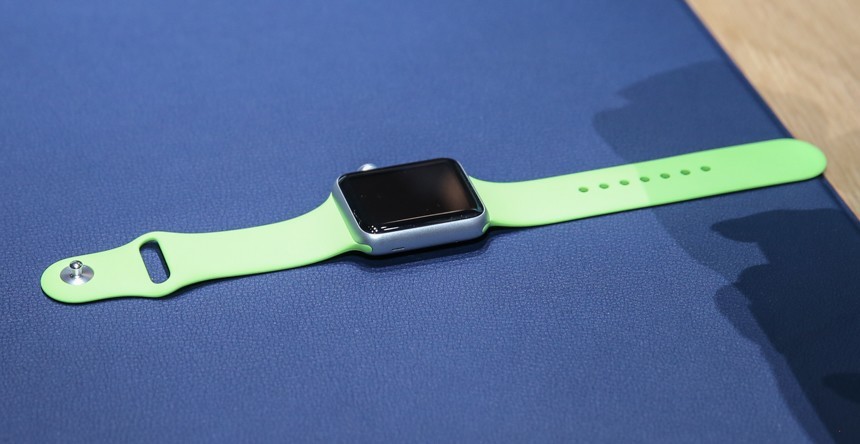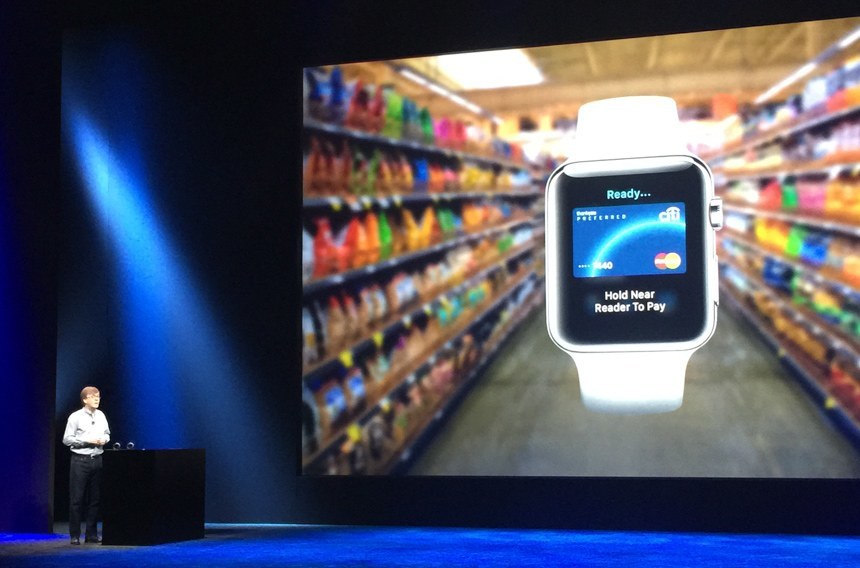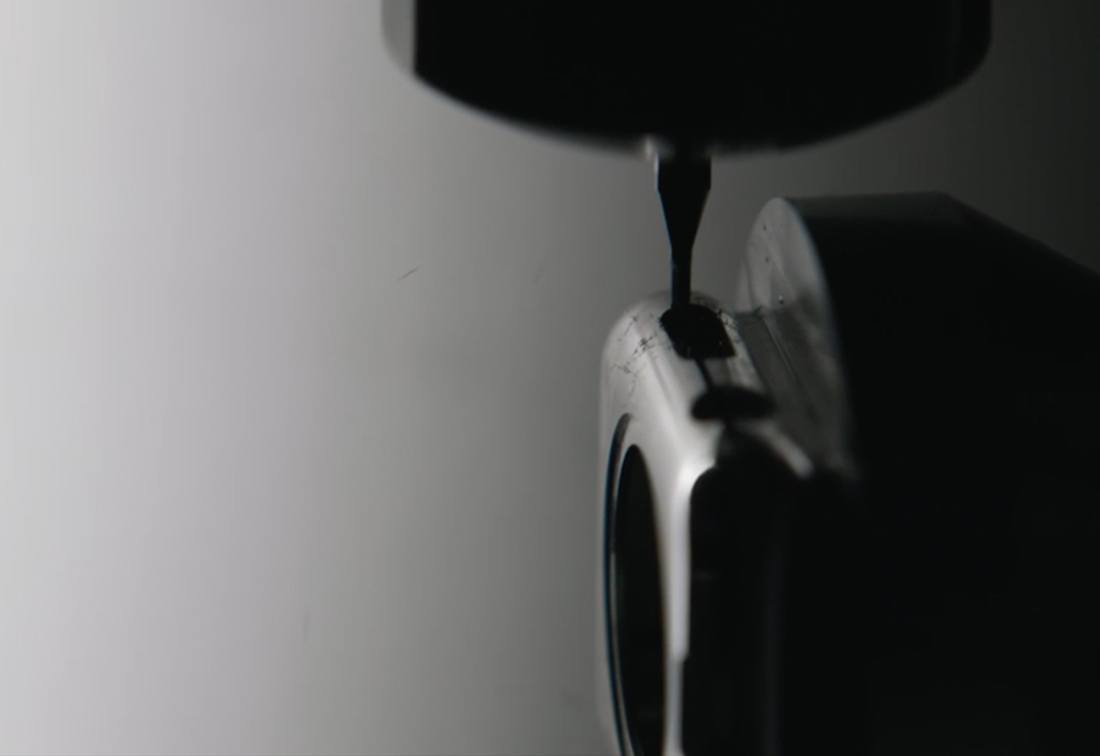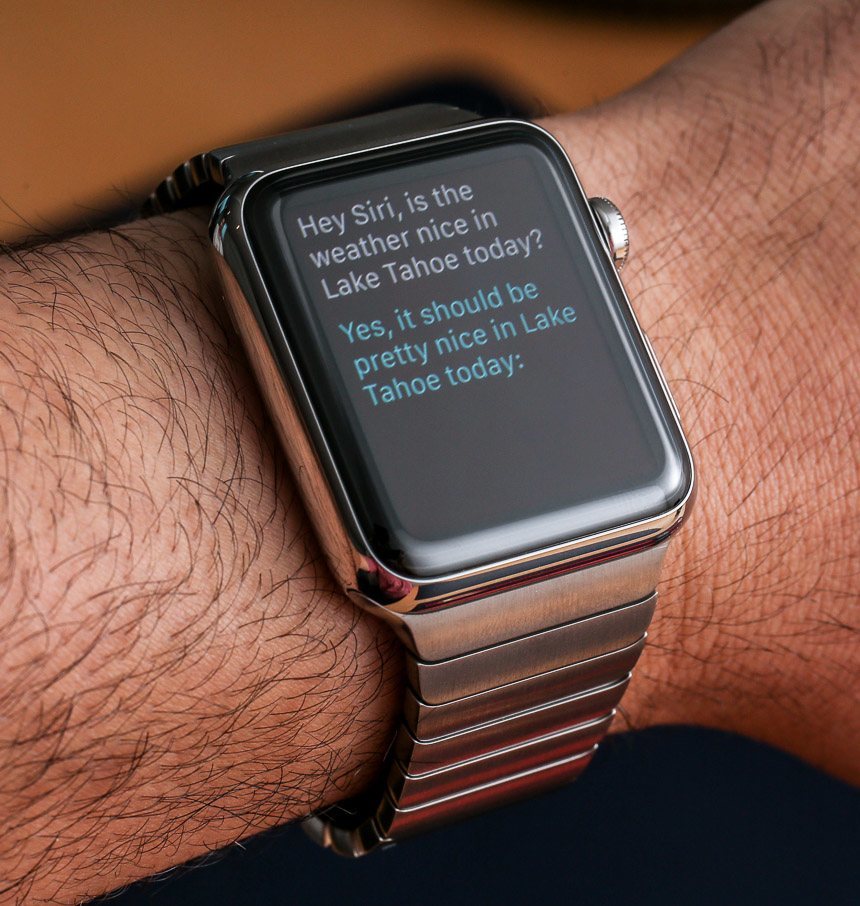
The Apple Watch represents a totally new frontier for Apple, whose corporate personality evolves as they enter the “wearable” space when the Apple Watch goes on sale April 24, 2015. The company’s first smartwatch (which they choose to not refer to as a smartwatch, just like they didn’t call the iPhone a smartphone) is also one of the most unique and difficult to explain products that they have ever produced. It further represents a noteworthy irony, because Apple itself was a crucial factor in the diminishment of consumers wearing watches to begin with. Now, Apple wants people to rediscover not only wearing things on their wrists, but the value of the timepiece itself. So how exactly did Apple train people to forget their watches in the first place?
In 2007, when Apple first released the iPhone, the proliferation of mobile phones to mainstream consumers was about a decade old. Sure, mobile phones had been around since the 1980s, but it wasn’t until the late 1990s that owning a mobile phone became relatively ubiquitous. Consider that Apple helped make the mobile phone an almost necessary and constant companion as it helped solidify the age of the smartphone with a mobile tech product mainstream consumers felt comfortable rallying behind. Apple helped teach us that our mobile phones could replace or supplement almost all of our existing technological devices including our computer, television, music players, and of course, timepieces. Wearing a wrist watch was something that was on the decline since the late 1990s, and Apple helped put a deep nail in the watch coffin when it came to the habits mainstream consumers.
Apple never had crosshairs specifically on the wrist watch, but the popularity of the iPhone and other smartphones removed the need to wear a timepiece for many people. Starting in the mid 2000s as a way of combating decreasing consumer demand for timepieces, the watch industry shifted its marketing focus to make timepieces more about fashion and lifestyle, versus functionality or utility. Of course, here on aBlogtoWatch, we cater to the interests of the dedicated watch lover and aficionado – a demographic who continues to be marveled and inspired by the mechanical intrigue, artistry, and beauty of the traditional watch. Nevertheless, we are the first people to recognize that the fine watch is anything but mainstream, and society at large no longer has a strict reason to wear a watch – at least until now.
The popularity of the iPhone and competitor smartphones trained an entire generation of consumers to take off their watches or never put one on in the first place. “Who wears a watch anymore?” has probably been a common statement watch people like us on aBlogtoWatch have had to hear on more than one occasion. Apple developed the iPhone because they hated what the competition was offering at the time, but Apple did not begin development on the Apple Watch because they hated timepieces. In fact, the situation was quite the opposite.
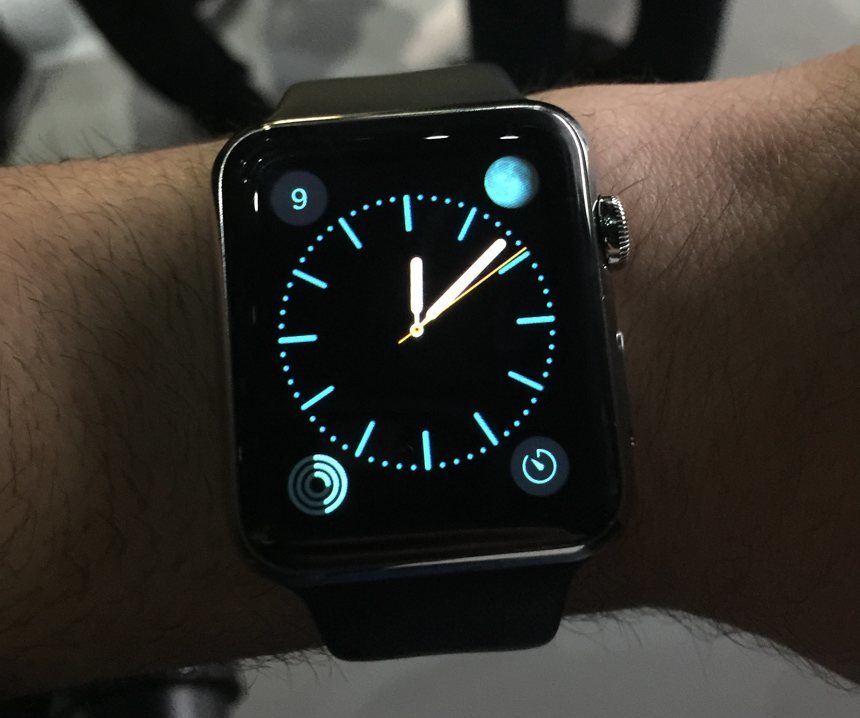
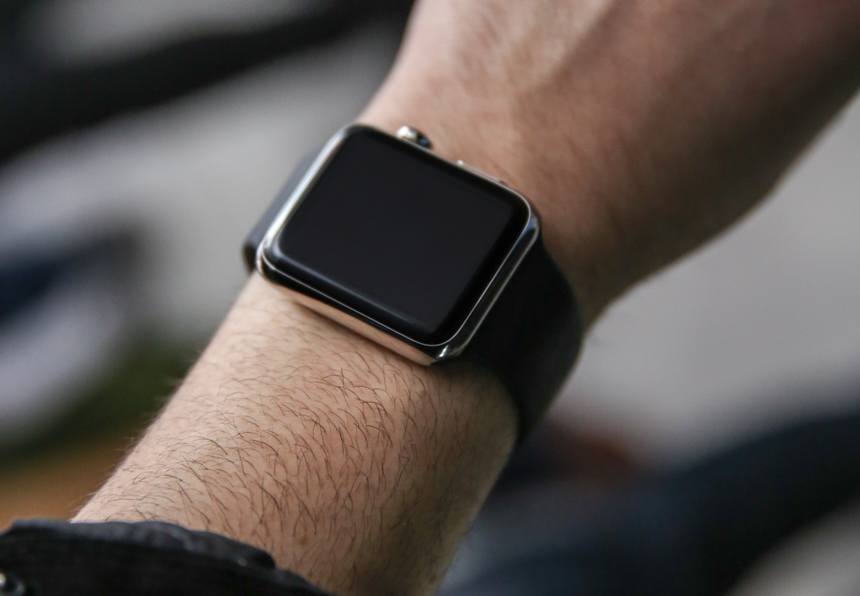
Apple is a company with a lot of watch lovers. Apple designed the Apple Watch as a modern timepiece inspired by appreciation and affection for traditional watches. Apple’s famous designer Sir Jony Ive is a major watch collector with a stable of very traditional mechanical watches; and at Apple and among colleagues, he isn’t alone. Ive is also friends with Marc Newson – another watch lover and designer who Apple officially hired last year, even though Apple has explained they worked with Newson on the Apple Watch for a few years before the announcement. From my experience with Apple and spending some quality time with the Apple Watch, I feel that the company’s new product is fundamentally misunderstood by many people both in and out of the tech industry.
Sitting at the Apple event in San Francisco on March 9, 2015, I was surrounded by the absolute elite of the tech world’s journalism corps. Everyone there was familiar with Apple, their products, and tech news overall. However, most of them seemed perplexed by how Apple was communicating about the Apple watch – something that I could sympathize with. What Apple neglected to really talk about was the tech inside of the Apple Watch. And even though the Apple website was updated with loads of information about the complicated construction of the Apple Watch parts, its functionality, and the unique (and proprietary) alloys used for the aluminum, steel, and gold metals used for the Apple Watch… Apple was silent on some of the more specific details such as tech specs and the “numbers” people in the tech (and watch) world often use to evaluate products.
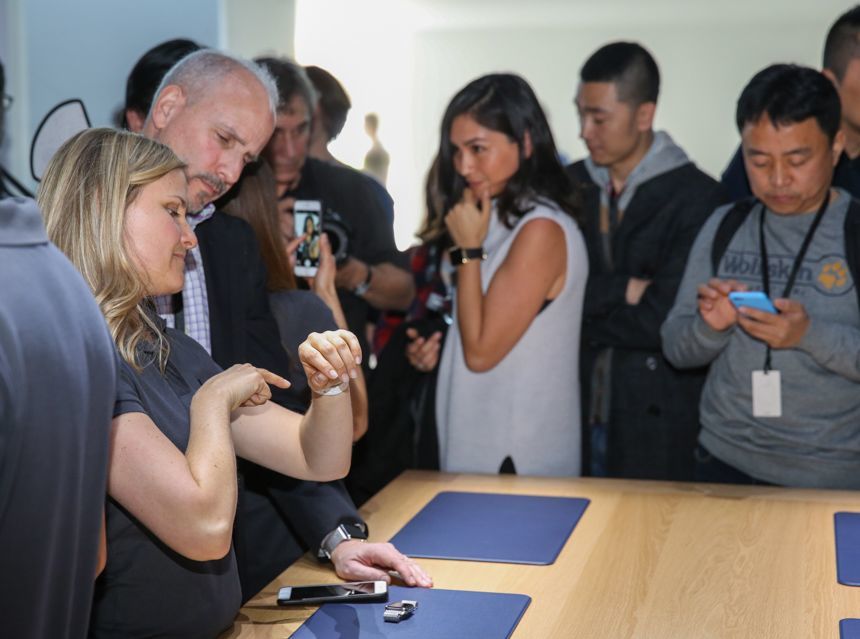
Without understanding too much about the underlying tech contained within the Apple Watch, most people in the technology news world were forced to use their imagination to understand how the Apple Watch might fit into their lives. The biggest question most consumers still have about the Apple Watch is “that’s nice, but what do I need it for?” Apple did their best explaining some of the core areas that they feel the Apple Watch will be used for, such as mobile contactless payment (Apple Pay), receiving and responding to messages right from their watches, interacting with their voice using SIRI, tracking their fitness data, and using new ways to communicate with others. Apple barely touched on how robust the application market for the Apple Watch might be, and some of the things that will be exclusively available on the Apple Watch versus on the iPhone. It isn’t that there aren’t answers to these questions, but rather that Apple may have not explained them enough.
With that said, I firmly believe that as a new type of product for Apple within a still-new category, Apple did a pretty good job of explaining a product that so few people have experience with. Why did Apple leave out detailed tech specs of the Apple Watch? I think it is because without having a lot to compare the numbers with, the tech specs would be merely abstract. Imagine if you’ve never used a computer and someone tells you that the processor is 2 GHz in speed. Would that mean anything to you if you haven’t used something slower and might get excited about something faster? Apple has slowly removed tech specs from how they communicate about a lot of products, focusing instead on assuring customers that their products will do what they claim to do well – a promise they often deliver on. Along those lines, I don’t think that Apple even wants to compare the Apple Watch to competitor smartwatches, because the experience on those devices is just so different – and this brings me to a very important point.
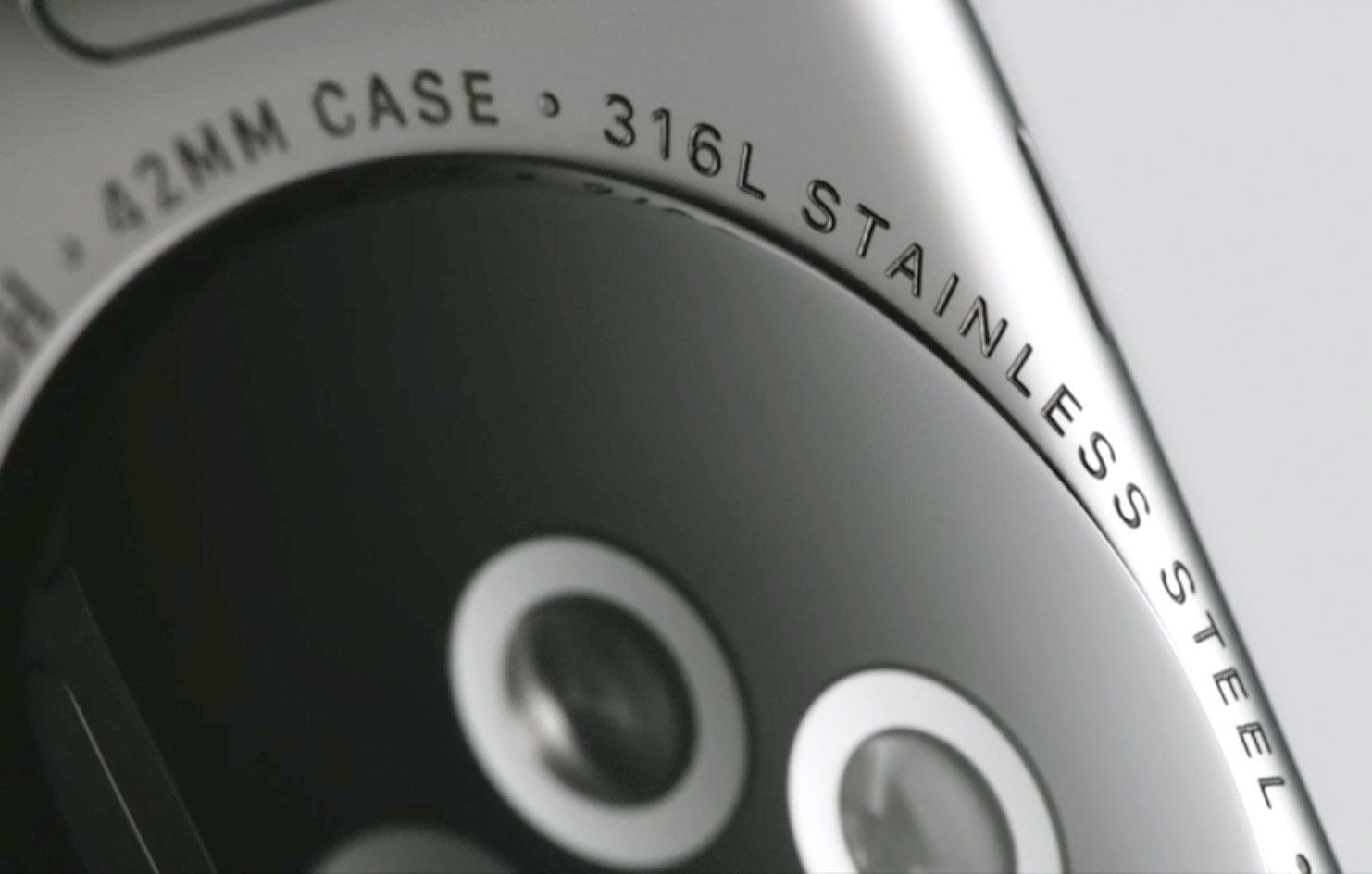
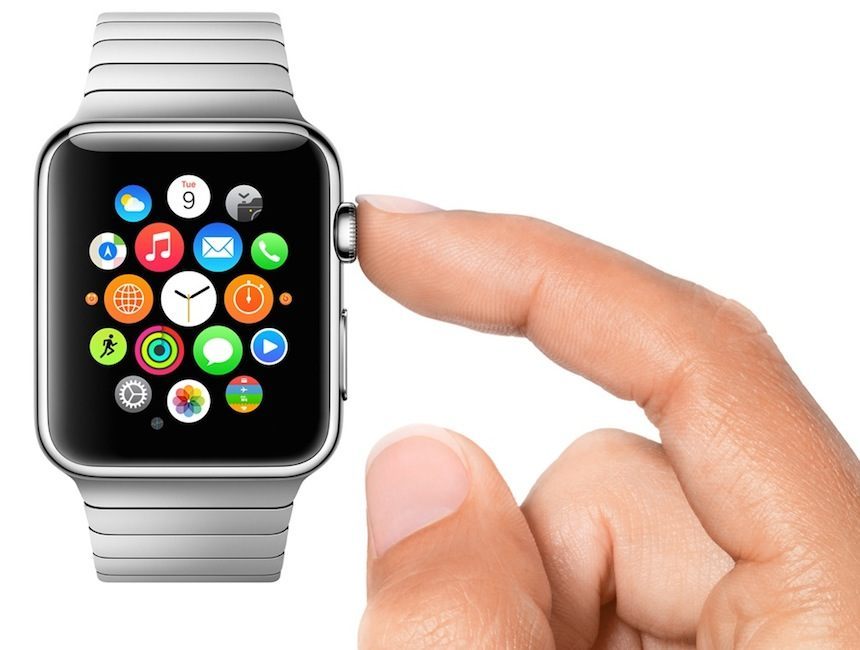
I’ve said that compared to the Apple Watch, most other smartwatches (especially those with digital screens) feel like toys. I don’t say that to insult other companies or because I love Apple, but I say it as a way of explaining the build and feel of the Apple Watch. Most of today’s Google Android Wear-based devices look like facsimiles of a watch, but not something a serious watch lover would ever consider as “nice.” The Apple Watch feels like a genuine modern manifestation of the watch, complete with quality materials and a very pleasant ergonomic and tactile experience. It is a watch product that would have naturally come about if the traditional watch industry continued to modernize and develop after the quartz watch became the status quo. After putting the traditional watch industry in a bad place, Apple has now come to the rescue of the watch truly bringing in to the 21st century, which is exactly what I said after my initial first-hand experience in my Apple Watch hands-on article.
What I’ve since learned is just how deeply Apple invested into researching the traditional watch world and innovating in dozens of places that have nothing to do with with the Apple Watch’s functionality or software. I’m talking about things like the tool-less steel bracelet, the magnetic straps, the metals and materials themselves, and the way you change straps. Apple has more-or-less said “we don’t know why the watch industry didn’t do many of these things first.” That not only implies that Apple exerted substantial time and resources when developing the Apple Watch, but also that they have been closely researching the traditional watch industry – a fact that Ive and other top Apple executives have stressed for a while.

I wouldn’t believe the same thing about what Samsung (for example) has done in the smartwatch space. While the Samsung Gear models have some traditional looking watch dials, they clearly didn’t put the effort or apply the same type of understanding to the watch world as Apple did in their hardware. With that said, is passion and a love of watches by some key Apple employees why the Apple Watch is so much like a traditional watch? I think there are more practical reasons than that, and here is where Apple confuses so many of the journalists who traditionally cover the brand. Things people wear are part of fashion, a category that tech writers tend to not cover too much. Fashion is what gets people to wear something, and technology is what gets people to use something. Where the Apple Watch is so confounding as a new product is that fashion writers may not be able to appreciate the technological utility of the Apple Watch and tech writers more-or-less don’t understand why Apple created so many versions, at so many different prices that all do the exact same thing. This is the first time I am aware of that Apple has ever segmented a product by price merely based on external, cosmetic reasons. That’s totally normal for the watch or fashion industry, but its a novel concept in the tech world.
So the interesting situation for Apple is that very few of the journalists and influencers covering the Apple Watch truly understand it from both the technological and fashion perspectives. In fact, I might be one of those few – which, trust me, is an amusing coincidence for me as well. Suddenly, I am in a unique position to discuss a category I never imagined would even exist back in 2007 when I started to write about watches while living in San Francisco – the tech capital of the world. With that said, consumer (and journalist) hesitation about smartwatches is something that I feel is merely temporary. If the Apple Watch turns out to be something people quickly adopt, then familiarity with what the Apple Watch is will increase. Apple’s goal is to make that happen sooner rather than later – and a big part of that is teaching people to love watches again.

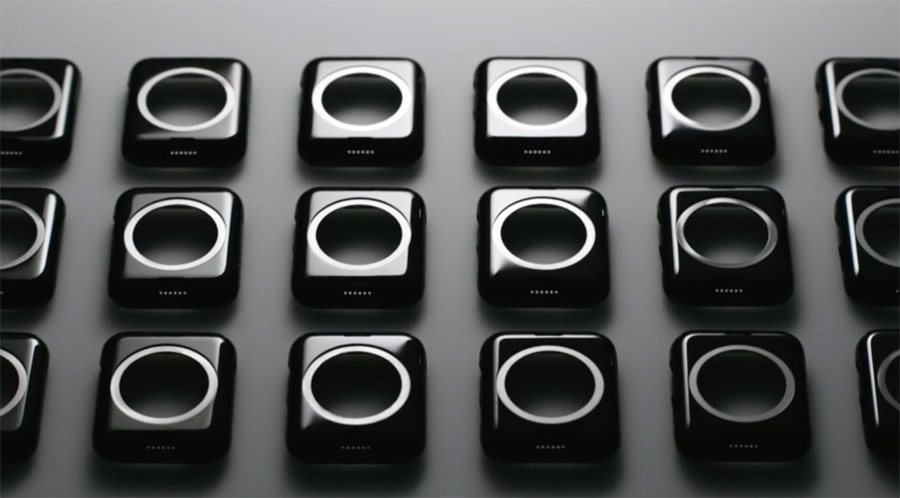
The problem with the Apple Watch is just how much functional potential it has when you think about all the apps that can utilize its functionality. Apple itself doesn’t really know what features consumers will latch on to, because most of the people at Apple represent a sort of tech elite, and their habits and desires might be very different from the mainstream consumer they need to romance with a novel product. In a sense, Apple is jumping the gun by making such a nicely made smartwatch, because most consumers still aren’t convinced they need to buy a smartwatch to begin with. The fact is that many consumers are in shock that some people might pay several hundred dollars (let alone thousands of dollars) for any type of watch. With prices for most smartwatches hovering around the $200 mark, I think a lot of consumers feel Apple is out of line asking for so much for the Apple Watch, even though they don’t really understand what they are getting. Apple seems to have forgotten that so many people out there are completely unfamiliar with nice watches, and the very category of people who are familiar with nice watches are threatened by the Apple Watch. If the Apple Watch becomes as useful as Apple claims it will be, then traditional watch lovers will be forced to make the difficult decision of wearing an connected modern electronic versus traditional mechanical timepiece.
Even some people at Apple have expressed a degree of chagrin over the fact that the traditional watches they are so attached to are getting a lot less “wrist time.” While people at Apple are understandably positive about their company and their new products, I sensed a genuine sense of surprise at how even the most skeptical of people there seemed to find the Apple Watch to become a welcome, and even indispensable part of their day. Analyzing this mentality and my own experience with smartwatches, I feel that given the existence of a refined and useful product, the smartwatch is something that will add to people’s lives, rather than exist as an “annoying second screen for their phone that they need to charge all the time.”
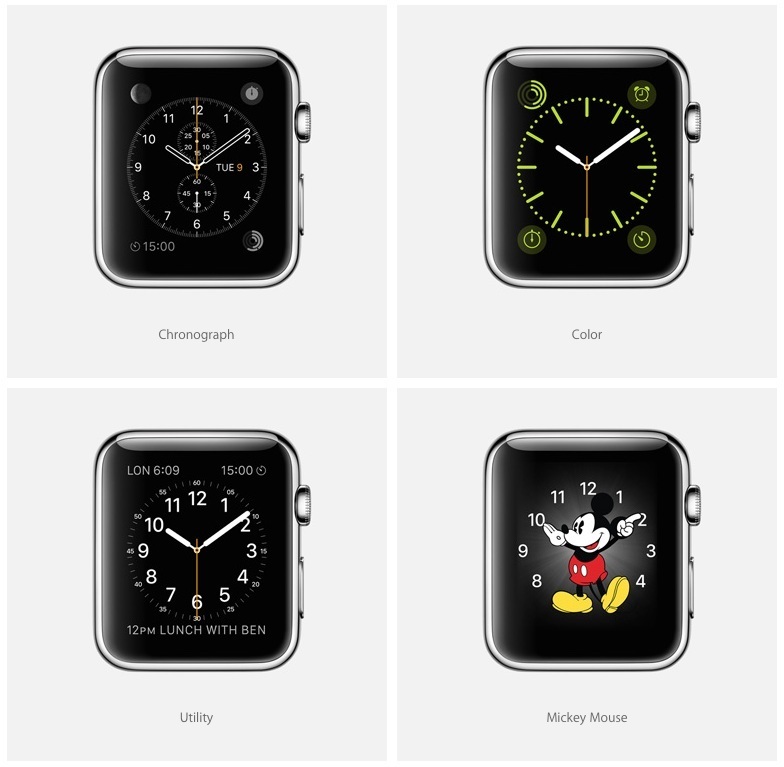 People who wear watches right now – especially watches they are attached to – represent a tiny percentage of the overall Apple Watch market. Apple has done a great job of helping to get consumers to forget their watches, so most people who will buy an Apple Watch either currently have naked wrists or a watch they are comfortable with giving up. Still, what about people like aBlogtoWatch readers who are threatened that a necessary or very useful technology device will compete for real estate space on their wrist? We either wear both or choose one for the day and one for the evening. My suspicion is that even if the notification service on the Apple Watch is curated to make it not too bothersome, it will still be something on our wrists that demand attention. While the Apple Watch might be the perfect helper for activity and work time, will it be a welcome companion for down time or socializing time? For those instances, I recommend you keep your “silent watch” (not “dumb watch”) around.
People who wear watches right now – especially watches they are attached to – represent a tiny percentage of the overall Apple Watch market. Apple has done a great job of helping to get consumers to forget their watches, so most people who will buy an Apple Watch either currently have naked wrists or a watch they are comfortable with giving up. Still, what about people like aBlogtoWatch readers who are threatened that a necessary or very useful technology device will compete for real estate space on their wrist? We either wear both or choose one for the day and one for the evening. My suspicion is that even if the notification service on the Apple Watch is curated to make it not too bothersome, it will still be something on our wrists that demand attention. While the Apple Watch might be the perfect helper for activity and work time, will it be a welcome companion for down time or socializing time? For those instances, I recommend you keep your “silent watch” (not “dumb watch”) around.
So what is it like to wear and use the Apple Watch? I haven’t discussed that too much. As you probably know, the Apple watch has several types of input methods, including the touchscreen, crown, pusher, motion, and voice. Between talking to it, pushing it, swiping it, and moving it, there is a lot of potential in how you interact with it. Is the Apple Watch something which is as intuitive as an iPad? Not exactly. Given the size and features, the Apple Watch has a steeper learning curve than some people might like. That isn’t to say the Apple Watch is complicated, but consumers will need some time to understand how it works. For example, tapping the screen is different than pressing the screen.
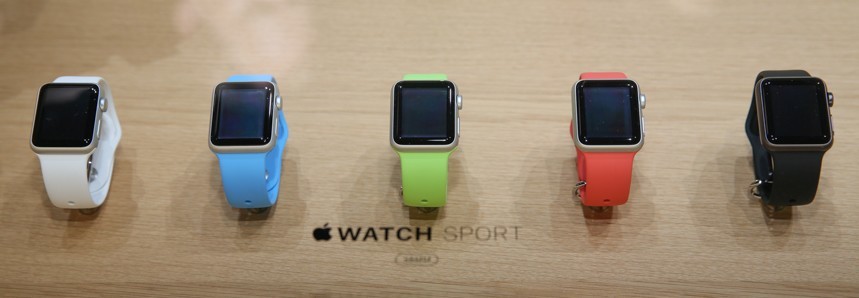
Then again, other smartwatches out there are just as complex, if not more so. Apple will no doubt continue to refine the Apple Watch over time with software updates as well as in subsequent versions. The Apple Watch isn’t just an experiment, but, in my opinion, a permanent step in Apple’s desire to dominate the wearable device space. Apple also seemed to miss an opportunity off the bat of making it easy for people to purchase several Apple Watches and use them together for one synchronized experience. Each Apple Watch is paired to your iPhone (which is where you download apps and control some of its functions). Each iPhone can only be paired with one Apple Watch at a time – which means you can’t have an Apple Watch Sport for exercise and an Apple Watch on a steel bracelet for more formal attire. Apple says people should just swap out straps, but I think they are missing the real value of having a diverse set of fashionable products. Anyone who loves watches doesn’t just have one, and I truly hope that in due course, Apple makes it comfortable to own more than one Apple Watch without having to own more than one iPhone.
With that said, Apple is going to make a lot of money on straps and bracelets. Some people might stick with just one strap, but I have a feeling the average Apple Watch wearer is going to have 2-3 straps before long. Apple designed most straps to look good with most versions of the Apple Watch – with mixing and matching looks to be something that will be encouraged. It isn’t clear yet whether or not third-parties will have the ability to sell Apple Watch straps – but I think that eventually they will. Apple has even hinted that what we are seeing in terms of available straps and bracelets is just the beginning, so expect that the fashionable element of the Apple Watch to be just beginning.
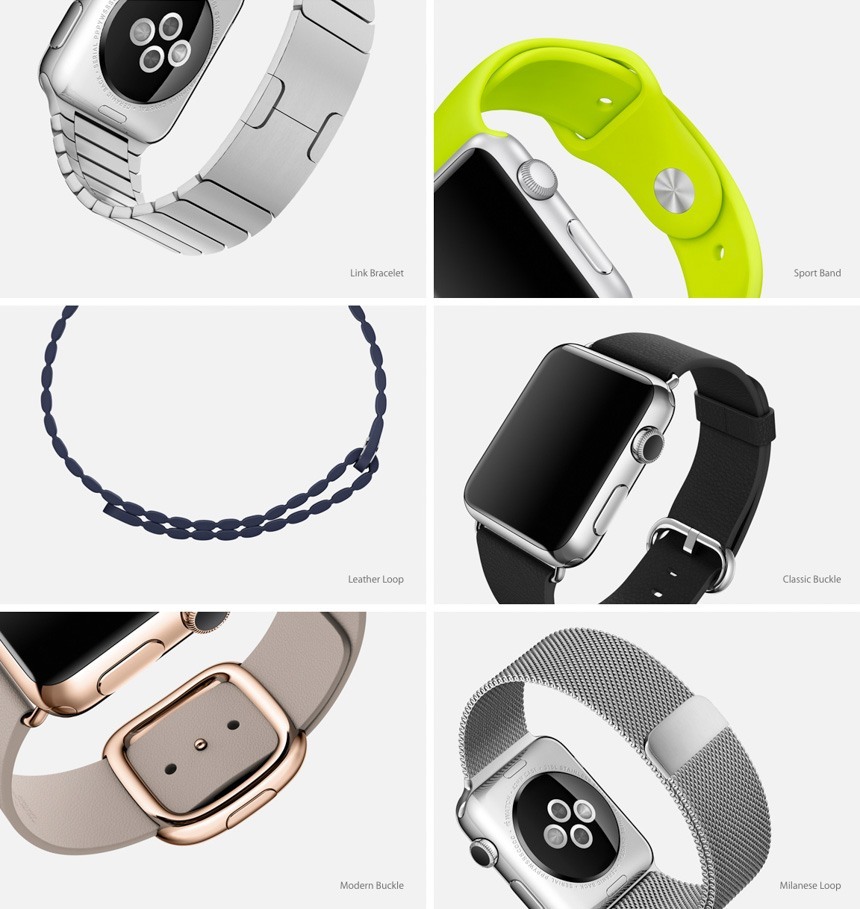
At $349 – $399 most people without any Apple Watch experience are going to probably purchase the least expensive Apple Sport watches to begin with. A major reason for that is that the Apple Watch Sport doesn’t do anything less than the 18k gold Apple Watch Edition, so everyone is getting the full functionality. I am pretty confident that, in time, the Apple Watch in steel with its tough steel alloy, scratch resistant sapphire crystal, and ceramic parts will be the most popular version of the Apple Watch, but only after Apple has established a base of consumer acceptance and familiarity. People just aren’t going to spend $550 to $1,100 when something less expensive is available as a test.
Apple has the dual role of having to convince people to buy their smartwatch as well as having to convince people to wear watches again. Apple has taken upon itself the large task of developing a nascent market and educating a large base of consumers. Perhaps no one is better equipped than Apple, but I think it is important to understand this when judging the short versus long-term success of the Apple Watch. My feeling is that the first year will be an important awareness and eduction-building time for Apple with the Apple Watch. That is because, in my opinion, most people will only develop a desire for one by having personal experience with it and seeing other people around them using it. Unlike other tech products that people have experience with or can understand in pictures and videos, the Apple Watch is part of a new category of technology products that consumers need to learn to love and want. apple.com/watch

